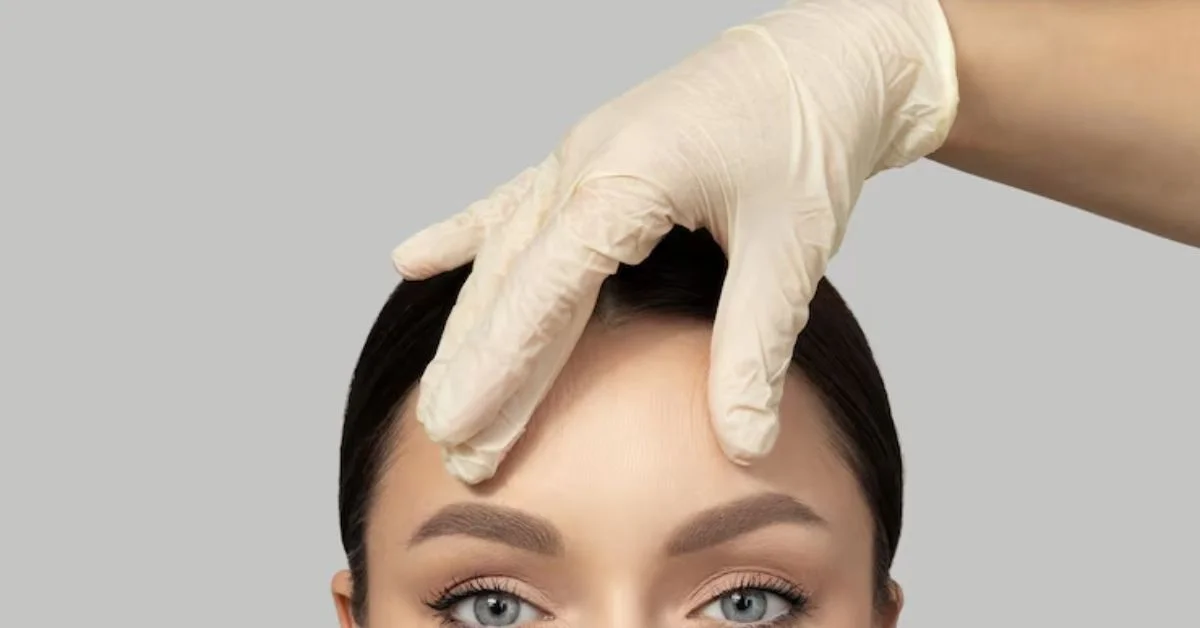If you’ve searched for “forehead reduction surgery,” you’re likely curious about how reshaping the forehead can influence facial balance, hairline position, and self-image. In the next hundred words, you’ll find a clear explanation of candidates, procedure steps, benefits, and risks—to help you decide whether it might suit your goals.
Forehead reduction surgery (also called hairline lowering or frontal bossing reduction) is a specialized procedure designed to shorten the forehead’s height, reposition the hairline, and sometimes reduce the prominence of the brow bone. This isn’t about vanity alone—it’s about facial harmony, confidence, and individualized aesthetic choice. In this comprehensive guide, we’ll explore step by step how the surgery works, who is a good candidate, what recovery involves, what outcomes you can expect, and how to weigh practical considerations like cost and long-term results.
1. Anatomy and Rationale Behind Forehead Reduction
The forehead’s vertical height is a defining element of facial proportions. A tall forehead can draw attention upward, whereas a lower hairline can balance the face, making the eyes and midface appear more prominent. Additionally, an overly pronounced brow bone may appear masculine or harsh—even for those with otherwise feminine facial features.
Forehead reduction surgery addresses these issues by:
- Advancing the hairline forward to reduce forehead height.
- Contouring the brow bone to soften its prominence.
- Creating facial harmony, especially beneficial for those with long foreheads due to genetics, hair loss, or previous reconstructive surgery.
2. Ideal Candidates and Consultation
Who Makes a Good Candidate?
- Adults aged 18+, fully developed skull.
- Concerned about a forehead that feels too large or disproportionate.
- Cognitively and physically healthy, with no serious bleeding disorders.
- Non-smokers ideally, as smoking impairs healing.
- Seeking improvement—not perfection.
What Happens During Your Consultation?
- Medical and aesthetic history—expect questions about hair loss, surgeries, and health.
- Physical assessment—skin laxity, scalp mobility, hair volume.
- Facial analysis—photographs taken from multiple angles.
- Discussion of goals, procedure options, and customized treatment plan.
- Pre-operative tests, including blood analysis or imaging if necessary.
This is the time to discuss realistic results: a lower forehead, softer brow, and overall facial balance—not a celebrity look per se.
3. Surgical Techniques Explained
There are three primary techniques for forehead reduction:
A. Trichophytic Hairline Advancement
- Most common method.
- Involves an incision just behind the hairline to advance the scalp.
- Edges are trimmed to encourage hair growth over the scar, camouflaging it.
- Effective for forehead reductions of 1.5–3 cm.
B. Scalp Advancement with Forehead Flap
- More complex.
- A wider flap is advanced and secured with dissolvable sutures.
- Often used when combining hairline lowering with other procedures, such as brow lifting.
C. Brow Bone Contouring (Forehead Bossing Correction)
- Frequently paired with hairline lowering.
- Bone is burred down beneath the brows for a smoother contour.
- Secured with plates or screws for stability—usually under general anesthesia.
4. The Surgical Journey: From OR to Recovery
On the Day of Surgery
- General anesthesia is typical.
- Hair is washed with antiseptic; surgical area marked.
- The surgery lasts 2–4 hours.
Early Recovery (Day 1–7)
- Expect swelling and bruising; a pressure bandage or head wrap may be applied.
- Keep the head elevated and cold compresses helpful.
- Pain addressed with prescribed medication.
- Gentle hair washing may begin after day 3, per surgeon’s guidance.
Intermediate Recovery (Weeks 2–4)
- Swelling subsides; scalp numbness may persist.
- Sutures or staples removed between days 7–14.
- Light activities resume after two weeks.
- Avoid sun exposure, strenuous exercise, or hair dye.
Long-Term Healing (Month 1–6)
- Hair regrowth over incisions camouflages scars.
- By 3 months, most swelling resolves; final results usually visible by 6–12 months.
5. What Results Can You Expect?
Forehead reduction surgery offers: Forehead Reduction Surgery
- A lower hairline and reduced forehead height.
- Softer, more feminine brow shape if combined with brow bone contouring.
- Improved facial balance—eyes appear larger, midface more proportional.
Permanent changes last a lifetime, though age, hair loss, or facial sagging may influence appearance over time. Scarring is typically hidden within the hairline and continues to soften and fade over months.
6. Risks and Complications
Though considered safe, potential complications include:
- Temporary or permanent scalp numbness due to nerve stretching.
- Visible hairline scarring.
- Minor asymmetry in hairline or brow position.
- Hair loss near the incision line.
- Bleeding, infection, or delayed wound healing.
- Very rare risks like seroma or nerve damage.
Risk is minimized with careful patient selection, surgical expertise, and attentive aftercare.
7. Combining Procedures: Why Many Patients Do
Forehead reduction is often combined with related procedures to enhance harmony:
- Brow lift to elevate sagging brows.
- Blepharoplasty to rejuvenate the eyelids.
- Rhinoplasty for midface balance.
- Facial filler or fat grafting to smooth forehead or brow transitions.
An experienced surgeon can discuss combined approaches during your consultation.
8. Cost Considerations: Forehead Reduction Surgery
Total cost ranges from $8,000–$15,000 depending on:
- Geographic region and surgeon expertise.
- Whether combined with other procedures.
- Facility and anesthesia fees.
- Pre- and post-operative care.
Most patients undergo this procedure through cosmetic (not insurance-covered) payment paths. Many surgeons offer financing plans to ease upfront costs.
9. Choosing the Right Surgeon
When selecting a provider:
- Choose a board-certified plastic or facial plastic surgeon.
- Look for specialization in forehead/hairline procedures.
- Review before-and-after images and patient testimonials.
- Make sure the consultation includes clear explanations of procedure, recovery, and realistic expectations.
- Confirm facility accreditation and standard of care.
Trust, experience, and clear communication are key.
10. Psychological Impact and Motivation
Many patients experience:
- Increased confidence as facial proportions shift.
- Less self-consciousness in social and professional settings.
- A sense of empowerment in aligning appearance with identity.
However, healthy motivation is essential. This procedure is not meant to chase trends but to support one’s own sense of aesthetic alignment.
11. Long-Term Maintenance and Outlook
Post-surgery, many patients:
- Experience excellent long-term results.
- Might need periodic touch-ups or filler as age progresses.
- Should maintain a stable weight and healthy lifestyle.
- May opt for future brow or eyelid adjustments—scar-free options exist.
Routine UV protection, gentle hair care, and scalp massages support scar health and comfort.
Conclusion
Forehead reduction surgery is a transformative procedure for those who feel their forehead is out of proportion—whether due to genetics, hairline changes, or aesthetic preference. When performed thoughtfully by skilled surgeons, it can create significant facial balance, enhance self-esteem, and restore harmony in a subtler, natural way. As with any cosmetic surgery, success depends on realistic expectations, healthy motivation, and meticulous planning from consultation through recovery.
Frequently Asked Questions
1. How long is the recovery from forehead reduction surgery?
Initial recovery is 1–2 weeks, with most swelling reduced by 3–4 weeks. Final results emerge around 6–12 months.
2. Will I have visible scars?
Incisions are hidden within the hairline and camouflaged by hair regrowth. Visible scarring is uncommon if proper care is taken.
3. Is forehead reduction surgery painful?
Discomfort is manageable with prescribed pain relief. Most patients describe mild to moderate soreness that fades significantly within the first week.
4. Can the hairline grow back over the incision?
Yes—especially with trichophytic techniques, hair can grow through and mask scarring, creating a natural appearance.
5. Is the result permanent?
Yes—the surgical changes are lasting. However, age‑related skin laxity, hair loss, or facial volume loss may alter appearance, sometimes prompting complementary procedures later.
For more information, click here.









